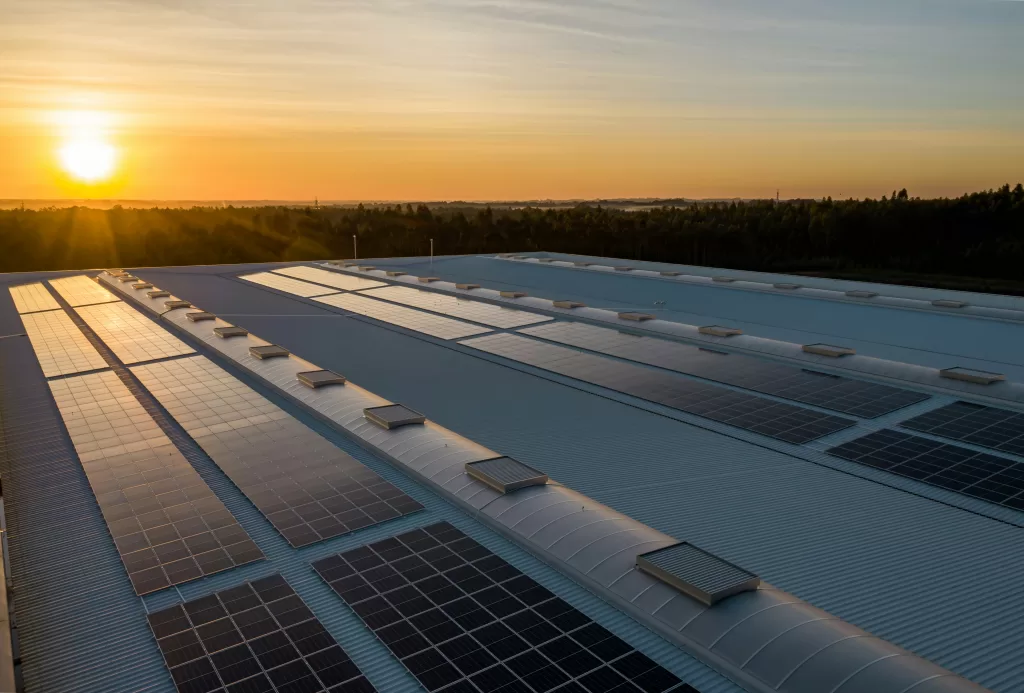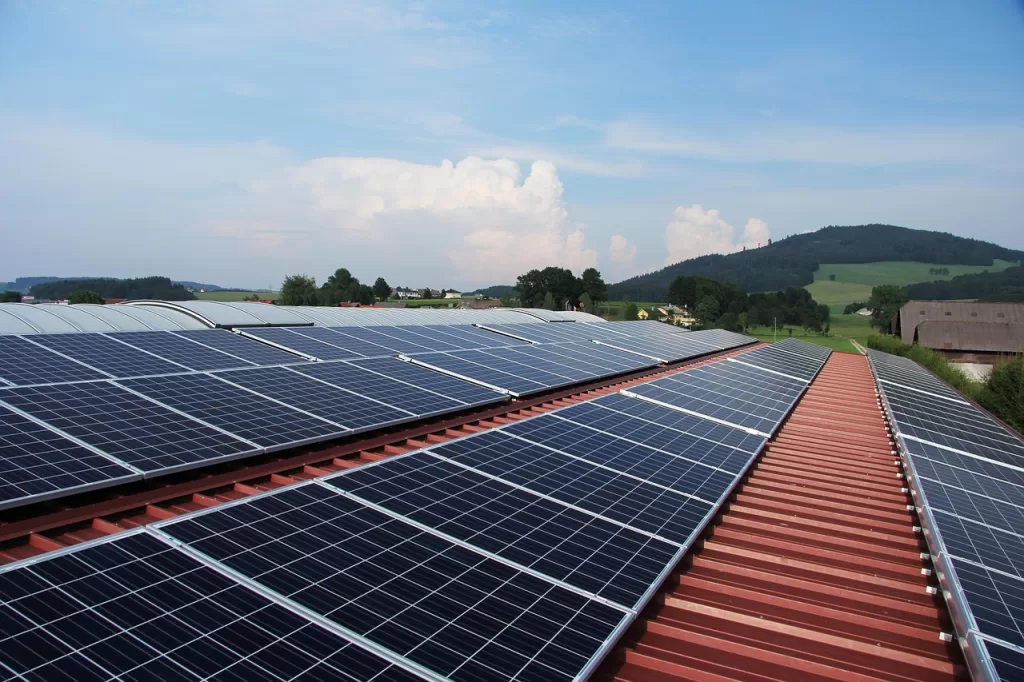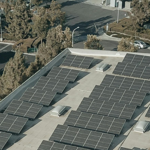As EU carbon tax policies become increasingly strict, businesses are facing growing pressure from carbon emission costs. Investing in photovoltaic power not only effectively reduces carbon tax expenditures but also achieves a win-win outcome for both environmental protection and economic benefits. This article takes Germany, France, Sweden, and Italy as examples to analyze the carbon tax policies and photovoltaic tax deduction mechanisms in typical European countries, helping businesses develop optimal emission reduction strategies.
Background overview: EU carbon tax policies and business pressure
The EU is actively promoting its carbon neutrality goals, and the Carbon Border Adjustment Mechanism (CBAM), which will be fully implemented in 2026, further strengthens carbon emission control. At the same time, national carbon tax rates continue to rise. In typical European countries such as Germany, France, and Italy, carbon taxes have reached €30–50 per ton of CO₂, while in Sweden, the rate is as high as €120 per ton of CO₂. Business carbon emission costs are rising rapidly.
Facing continuously increasing carbon tax pressure, European businesses urgently need effective green solutions to reduce the carbon tax burden and achieve sustainable economic development. Actively reducing carbon emissions and optimizing tax costs through photovoltaic power generation projects is gradually becoming the mainstream choice for businesses.

How Can Photovoltaic Power Help Businesses Offset Carbon Taxes
Carbon Reduction Value of Photovoltaic Power
100% renewable energy, directly reduces carbon emissions: Photovoltaic power generation involves no fuel consumption or carbon emissions, directly replacing traditional fossil fuels.
Each kilowatt-hour of solar power clearly offsets CO₂ emissions: In Europe, each kilowatt-hour of photovoltaic electricity can reduce approximately 0.4–0.6 kilograms of CO₂, lowering a business’s total carbon emissions.
Effectively reduces the cost of purchasing carbon allowances: By using solar power, businesses decrease their reliance on grid electricity, reducing the need to purchase carbon allowances and easing the burden of carbon tax payments. This precisely aligns with CBAM mechanisms and national carbon tax regulations across Europe, directly saving on carbon tax costs.
Economic and Policy Advantages
Many countries offer investment subsidies and tax relief policies for photovoltaic projects, helping businesses achieve both emission reductions and cost optimization. The following is a comparison of carbon tax rates and deduction mechanisms in typical European countries:
| Country | Carbon Price | Type of Enterprise | Deduction Mechanism | Applicable Requirements |
|---|---|---|---|---|
| Germany | €30/t CO₂ | Industrial and commercial enterprises | EU ETS quota trading (20%-50% deduction) + KfW concessional loans | Annual third-party certification, valid for the production period |
| France | €45/t CO₂ | All enterprises | Tax credit and self-consumption subsidies (up to 60% deduction) | Suitable for enterprises with high self-consumption, application required within 6 months of installation, annual renewal |
| Italy | €50/t CO₂ | Industrial and commercial enterprises | Photovoltaic incentives for businesses + CER quota trading (30%-55% deduction) | Suitable for long-term enterprises, incentives valid up to 20 years after approval |
How Can Businesses Effectively Implement Solar Tax Offsets
Photovoltaic Strategies for Businesses
Energy-intensive enterprises: Build large-scale rooftop or ground-mounted solar systems to fully replace traditional energy sources; also participate in Guarantees of Origin (GO) or carbon trading to gain additional economic benefits.
Small and medium-sized enterprises: Install rooftop solar systems or adopt joint investment models to reduce carbon tax costs.
Zero-investment model: Sign a Power Purchase Agreement (PPA) with a developer to enjoy green electricity without upfront investment, saving on electricity bills and reducing carbon tax burdens.
Self-Assessment: Is Your Business Suitable for Implementing Solar Tax Offsets?
| Condition Type | Applicable Standard | Advantages |
|---|---|---|
| Business Location | Enterprise located in the EU | Directly compatible with the CBAM reduction mechanism |
| Industry Type | Manufacturing, logistics, and energy-intensive sectors | High carbon emissions, significant room for tax deduction |
| Annual CO₂ Emissions | ≥ 5,000 tons of CO₂/year | High emission volume, substantial benefits from reduction |
| Electricity Consumption Pattern | Industrial/commercial electricity consumption with stable year-round load | Easier to increase self-consumption ratio from photovoltaic |

3. Estimating the Benefits of Solar Tax Offsets
Businesses investing in photovoltaic projects can directly save on carbon tax expenses by reducing CO₂ emissions. Taking Germany (€55 per ton of CO₂) as an example:
| Annual Company Emissions | Reduction Percentage | Annual Reduction | Annual Carbon Tax Savings |
|---|---|---|---|
| 5,000 tons of CO₂ | 30% | 1,500 tons of CO₂ | €105,000 |
| 10,000 tons of CO₂ | 40% | 4,000 tons of CO₂ | €280,000 |
| 20,000 tons of CO₂ | 50% | 10,000 tons of CO₂ | €700,000 |
According to the EU Renewable Energy Directive, Member States Provide the Following Tax Support Policies for Photovoltaic Projects
Germany: Up to 30% subsidy for photovoltaic investment, accelerated depreciation over 5 years
France: Up to 40% subsidy for photovoltaic investment, 15% corporate tax credit, accelerated depreciation over 4 years
Italy: 25% subsidy for photovoltaic investment, VAT reduction, accelerated depreciation over 3 years
Example: A French enterprise investing €1,000,000 in a photovoltaic project can receive up to €400,000 in subsidies, plus approximately €90,000 in tax credits, achieving a total tax optimization of around €490,000.
4. Implementation Process and Practical Recommendations
Phase 1: Energy Audit and Project Optimization Planning
Conduct an energy audit to analyze the company’s annual electricity usage patterns
Accurately plan photovoltaic system size and storage solutions to increase self-consumption ratio
Phase 2: Application and Implementation of Subsidies and Tax Incentives
Clearly identify the application window and deadlines for local photovoltaic subsidies or tax reductions
Prepare filing materials and company qualification documents, calculate the overall tax optimization amount
Select an experienced local photovoltaic EPC company to ensure compliance and efficient delivery
Phase 3: Carbon Reduction Certification and Allowance Trading
Establish a monitoring system for company emissions and reductions, and track data regularly
Collaborate with accredited certification bodies (such as Gold Standard) to complete CER certification on time
Choose the best timing to sell carbon credits in the market to optimize cash flow and tax costs
Practical Recommendations
Choose high-efficiency photovoltaic modules: Prioritize components with ≥23% efficiency such as HJT and TOPCon to enhance carbon reduction capacity
Equip with storage and EMS systems: Increase self-consumption rate, optimize load dispatch, and enhance project returns
Ensure accurate monitoring: Use real-time monitoring systems to improve CER certification success rate and trading performance
Leverage professional support: Collaborate with local energy consultants and industry associations to improve policy response and project success rate
Conclusion
Photovoltaic power has become a key solution for European businesses to address the challenges of carbon taxation. Through proper planning of solar projects and full utilization of national subsidy policies, companies can not only significantly reduce carbon tax costs but also secure long-term, stable returns from green energy. Under the goal of carbon neutrality, investing in photovoltaics is not only an environmental responsibility but also a strategic move to enhance competitiveness.
Since 2008, Maysun Solar has been both an investor and manufacturer in the photovoltaic industry, providing zero-investment commercial and industrial rooftop solar solutions. With 17 years in the European market and 1.1 GW of installed capacity, we offer fully financed solar projects, allowing businesses to monetize rooftops and reduce energy costs with no upfront investment. Our advanced IBC, HJT and TOPCon panels, and balcony solar stations, ensure high efficiency, durability, and long-term reliability. Maysun Solar handles all approvals, installation, and maintenance, ensuring a seamless, risk-free transition to solar energy while delivering stable returns.
References
European Commission – EU ETS Report 2024
https://climate.ec.europa.eu/eu-action/eu-emissions-trading-system-eu-ets_en
International Energy Agency – Photovoltaic Power Systems Programme
https://iea-pvps.org/research-tasks/enabling-framework-for-the-development-of-bipv/
Carbon Pricing Dashboard – World Bank
https://carbonpricingdashboard.worldbank.org/
Meccanismo di adeguamento del carbonio alle frontiere dell’UE (CBAM):
https://taxation-customs.ec.europa.eu/index_en
Minisero federale tedesco per l’Economia e l’Azione per il Clima (BMWK) – Incentivi fiscali per il fotovoltaico
https://www.mimit.gov.it/index.php/it/incentivi-mise/incentivi-in-evidenza
Ministero francese della Transizione Ecologica – Politiche per le energie rinnovabili
https://www.ecologie.gouv.fr/politiques-publiques/planification-energies-renouvelables-donnees
Ministero dello Sviluppo Economico italiano – Incentivi per fotovoltaico e sistemi di accumulo https://www.mimit.gov.it/index.php/it/incentivi-mise/incentivi-in-evidenza
Recommend Reading:

How Businesses Can Offset Carbon Taxes with Solar Power
This article analyzes the latest carbon tax policies and photovoltaic deduction strategies, helping European businesses legally reduce taxes, increase profits through solar investment, and achieve a win-win situation for both economy and environment.

Forecast and Response: Seizing the Next Decade’s Growth Dividend in Europe’s Commercial and Industrial Photovoltaics Market
Maysun Solar analyzes the growth trends of commercial and industrial photovoltaics in Europe over the next ten years, from policies and ESG to technological innovation, helping companies seize the initiative in the energy transition.

How to Calculate Solar System ROI and Optimize Long-Term Returns?
Solar power is becoming a key solution for businesses to reduce costs and improve efficiency. Accurately calculating ROI and optimizing long-term returns are essential to maximizing investment value.

Will Agrivoltaics Affect Crop Growth?
Agrivoltaics combines solar energy and agriculture to reduce up to 700 tons of CO₂ per MW, improve water use, and boost crop growth for sustainable farming.

6.5 Billion Loss Hits Photovoltaics: Reshaping or Elimination?
In 2025, the photovoltaic market may see a turnaround as some companies take early action. A €6.5 billion loss is driving businesses to explore new growth areas like energy storage and hydrogen. Which giants will break through? Industry transformation is accelerating!

What’s New in Solar Energy (March 2025)
March’s solar news highlights include rooftop solar meeting two-thirds of global demand, China’s market reforms potentially boosting solar demand and module prices, France revising solar targets in PPE 3, and challenges in Europe with declining capture rates and price volatility.


